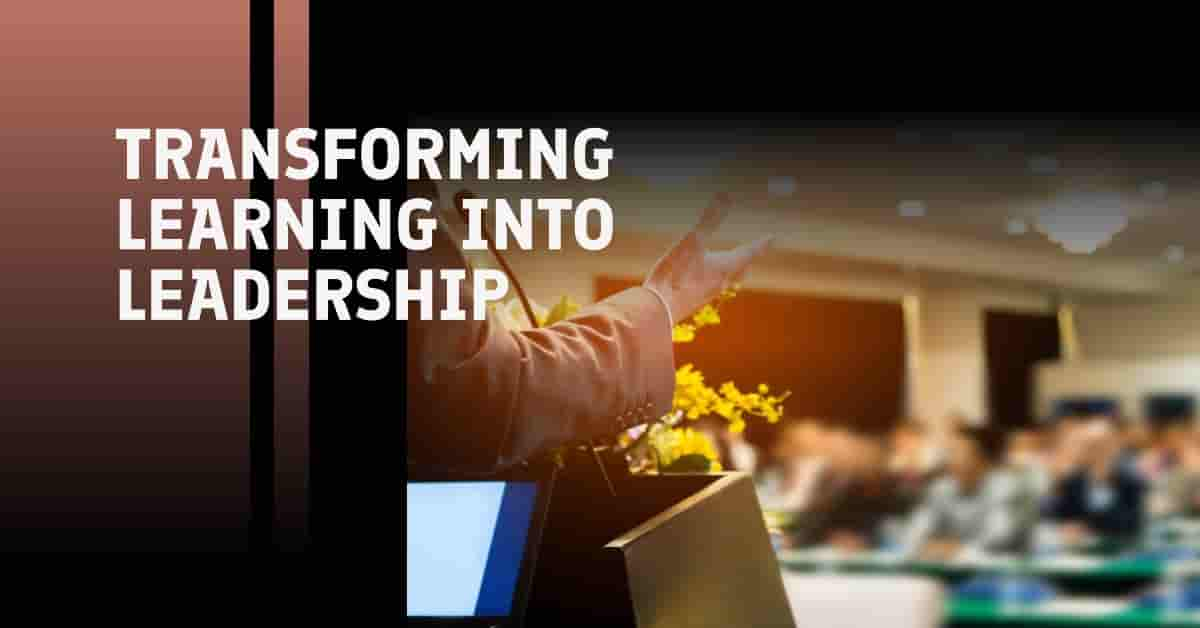
FROM LEARNING TO LEADERSHIP By Dr Kolawole Joshua
The motivation behind learning for many individuals is often misguided, as they frequently engage in learning solely to obtain certifications or pass professional examinations. Unfortunately, these individuals often overlook the fact that the true purpose of learning is to bring about transformation. Regrettably, many fail to connect the dots between learning and leadership. Learning is an ongoing process, whether it be in a structured environment, such as a school, or a more open-ended, self-paced approach. Learning can also come from both focused and diffused learning, such as reflecting on a concept.
Since the primary objective of the learning process is transformation, the goal is best achieved through lifelong learning, which is a characteristic of a vibrant and active mind. Without a living state, one is likely to disregard the value of learning. Engaging in transformational learning facilitates the development of critical thinking skills, encourages deep reflection, promotes sincere evaluations, and fosters collaborative efforts in leadership.
It is crucial to recognize that learning is an attribute associated with a vibrant and active mind. Conversely, a mind lacking vitality tends to dismiss the significance of deep learning. Many individuals prefer to skim the surface of learning rather than delve into its depths. Transformational learning, however, opens one’s mind to critical thinking, deep reflection, sincere evaluation, and collaborative leadership efforts.
Confucius aptly stated that “learning without thinking is useless, and thinking without learning is dangerous.” The thought process distinguishes us, emphasizing the importance of meditation and questioning. Transformational learning that is built on deep thinking and reflection is associated with sound judgment and that can improve the quality of the choices we make, the priorities we set, and the results we generate.

Research indicates a significant decline in the percentage of active learners over the years. As people grow to old age, there is a sharp decline in the hunger for learning. 4 per cent. From the research, remains open to learning at age 65 and above. These remnants of self-motivated individuals make a lasting impact, highlighting the expectation for everyone to be a lifelong learner.
There are three different stages of learning as identified in the video:
- Stage One (The teacher-driven learning Stage): learning at this stage operates at the surface and superficial level. Theoretical postulations are the basis of learning at this stage. The system of learning at this stage is also built around the ranking system. And the goal is often focused on the right answers and not really on the questions.
- Stage Two (Improvement peer-collaborative Stage): In the second stage, learners become improvement-driven, embracing formative evaluation and collaborating with peers to gain a deeper understanding of the material.
- Stage Three (Responsibility Learning Stage): This third stage involves taking responsibility for learning, assessing progress, and re-evaluating assumptions to bring innovation into leadership. At this level, collaborations happened among leaders towards problem-solving. Another important focus of learning at this level is that it is system thinking, which focuses on associations and strategic thinking deep learning, collaboration, reflections and evaluation of experience, focused on right questions, systems thinking, strategic thinking and Transformation impact.
Our learning process must progress to the point in which we can authentically solve problems. When we start moving from our learning to applying our knowledge in our environment in addressing issues that are unique to our world experience, then we are fast becoming leaders. So, think deeper, meditate on concepts, and refine your understanding. When you learn deeper, you will think better with increasing precision and then lead better.
